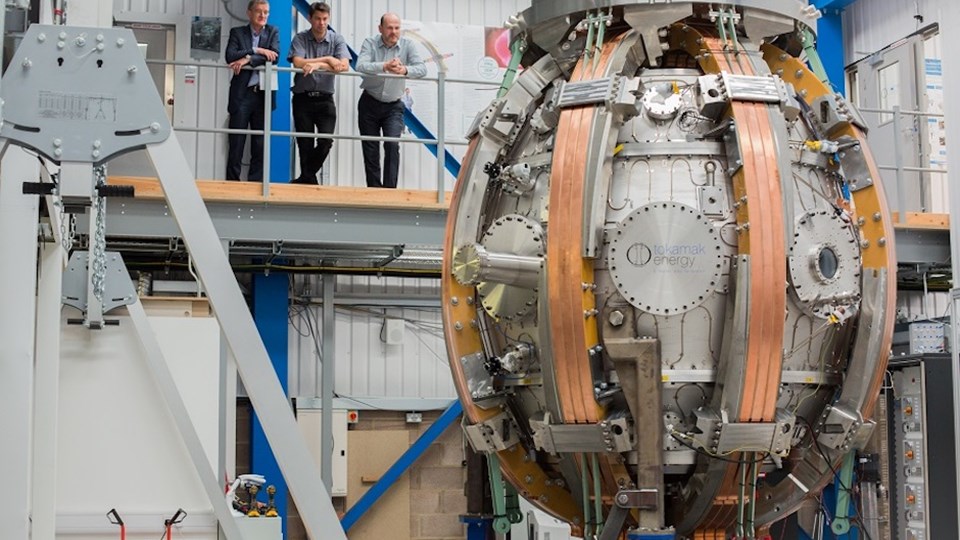
According to the Oxford-based company, the ST80-HTS will be the world’s first high field spherical tokamak using high temperature superconducting (HTS) magnets. Planned for completion in 2026, the new reactor is the company’s latest step towards commercial fusion power and will inform the design of its ST-E1 fusion pilot plant, which will target up to 200MW of net fusion power in the early 2030s.
Tokamak Energy says the ST80-HTS will aim to deliver a higher triple product than any previous fusion device. Widely accepted as a yardstick by which to gauge progress towards commercial fusion, triple product (nT??E) combines measurements of plasma density, temperature and confinement. Dense plasma ensures better chances of particles collisions, high temperature plasma allows fusion reactions to take place, while longer confinement time provides a bigger window for sustained reactions.
Tokamak Energy has already achieved plasma temperatures in excess of 100m°C with its ST40 spherical tokamak. It will attempt to replicate these temperatures on the ST80-HTS, but extend the pulse duration significantly, targeting pulses up to 15 minutes. Combined with sufficient plasma density, this should deliver a triple product approaching what is required for a commercial fusion power plant.
“At a time of heightened global concern with energy shortages and escalating prices, there is an acute need for new, clean, dispatchable technologies to reduce carbon emissions, provide grid flexibility and security of power supply,” said Chris Kelsall, CEO of Tokamak Energy.
“Our roadmap for pioneering commercial fusion energy has the potential to deliver a game-changing solution. Our next high field spherical tokamak, the ST80-HTS, has the goal of demonstrating the engineering solutions needed to make commercial fusion energy a reality, providing the foundation for the global deployment of fusion power plants in the mid-2030s. This would provide humanity with access to clean, sustainable, on demand and low-cost energy, wherever and whenever it is needed.”